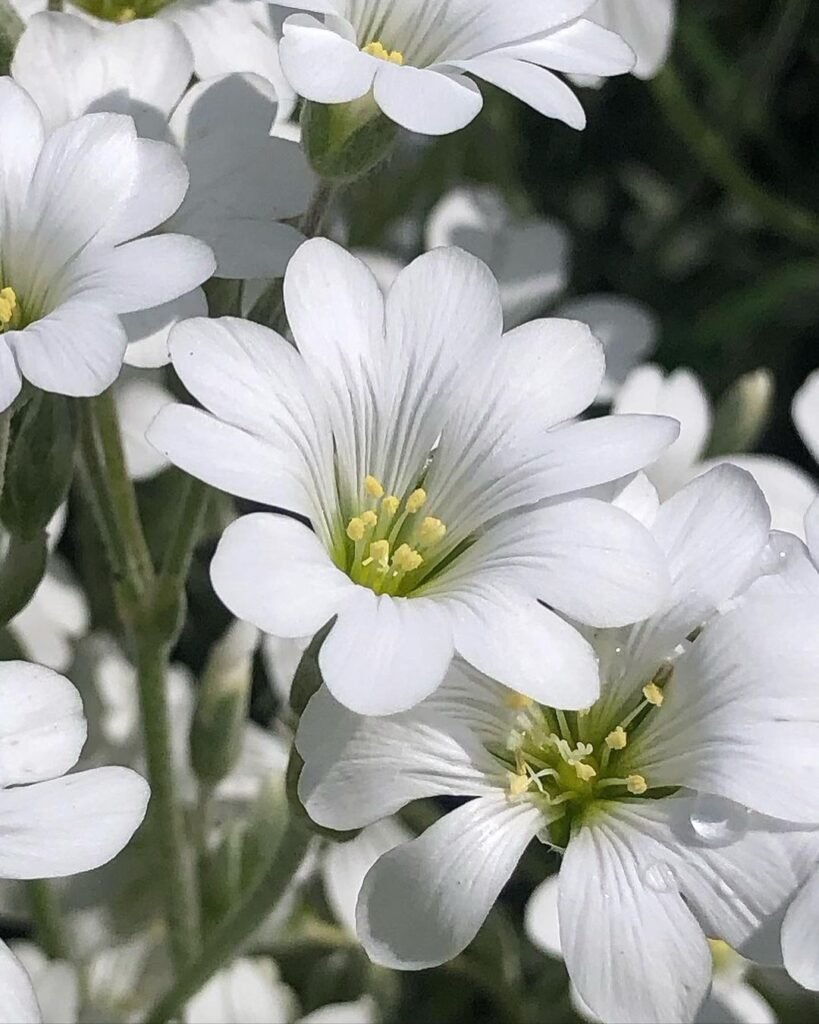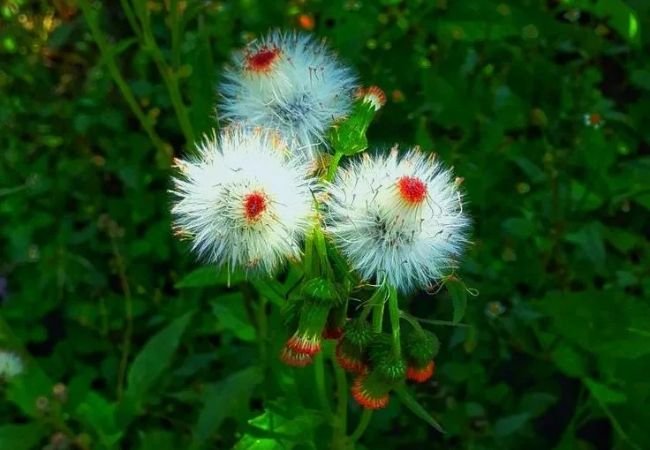Learn how to grow Snow-in-Summer (Cerastium), a hardy ground cover with silver foliage and white flowers. Get planting tips, care guidelines, and solutions for common problems.

I first saw Snow-in-Summer cascading over a rock wall in a local botanical garden. The plant formed a solid mat of silvery-gray, covered in a blizzard of small white flowers. I knew immediately I had to have it in my own garden. After several years of growing it, I can confirm it’s one of the toughest and most rewarding ground covers you can plant, perfect for those tricky, sunny spots.

Snow-in-Summer (Cerastium tomentosum) is a low-growing, herbaceous perennial known for its felt-like, silver leaves and prolific display of tiny, star-shaped white flowers in late spring to early summer. It’s a fast-spreading plant that thrives on neglect, making it ideal for beginners.
Why Grow Snow-in-Summer?
You should grow this plant for three main reasons. First, its stunning silver foliage provides visual interest all year round. Second, it creates a spectacular display of flowers that truly looks like a fresh snowfall. Third, it is incredibly drought-tolerant and can thrive in poor soil where other plants struggle. It’s an excellent choice for rock gardens and slopes.
How to Plant Snow-in-Summer
Getting this plant established is simple if you choose the right location.
Choosing a Location
The most critical factor for success is full sun. This plant needs at least six to eight hours of direct sunlight daily to maintain its compact form and prolific flowering. In too much shade, it becomes leggy and flowers poorly.
It is not picky about soil. In fact, it prefers poor to average, well-draining soil. Rich, fertile soil can make it grow too aggressively. It is excellent for erosion control on sunny slopes.
Planting from Nursery Pots or Seeds
You can start from seeds or small plants.
- From Plants: This is the easiest method. Dig a hole as deep and wide as the root ball. Place the plant in the hole, backfill with soil, and water thoroughly. Space plants 12 to 18 inches apart, as they will quickly fill in the gaps.
- From Seed: Sow seeds directly on the soil surface in fall or early spring. They need light to germinate, so do not cover them. Keep the area lightly moist until germination occurs.
Caring for Your Plants
Snow-in-Summer is very low-maintenance once established.
- Watering: Water regularly to help young plants establish a strong root system. Once mature, the plant is highly drought-tolerant. You only need to water it during extended periods of dry weather. Overwatering is a bigger threat than underwatering.
- Fertilizing: Do not fertilize. Fertilizer encourages weak, floppy growth and reduces flowering. This plant thrives on neglect.
- Pruning and Deadheading: After the main bloom period, shear the plant back by about one-third to one-half. This cleans up the spent flowers, prevents self-seeding, and encourages fresh, tidy foliage growth. I always do this with my garden shears right after flowering.
A Quick Care Reference
| Care Aspect | Requirement |
|---|---|
| Light | Full sun (at least 6-8 hours daily). |
| Soil | Poor to average, very well-draining soil. |
| Watering | Low water needs once established. |
| Fertilizing | None needed. |
| Growth Habit | Low-growing, fast-spreading ground cover (3-6 inches tall). |
Common Problems and Solutions
Even tough plants can have issues. Here’s how to handle them.
- Leggy Growth: This is caused by too much shade, overwatering, or over-fertilizing. Move the plant to a sunnier location and cut back on water and fertilizer.
- Root Rot: The most common killer of this plant is soggy soil, especially in winter. Ensure it is planted in very well-draining soil. If your soil is heavy clay, amend it with gravel or sand or plant in a raised bed.
- Invasive Spreading: In some regions, Snow-in-Summer can spread aggressively. Its vigorous nature is its greatest asset and its biggest drawback. To control it, plant it where it can be bounded by a path or sidewalk, or shear it back rigorously after flowering to prevent seed formation. The Missouri Botanical Garden lists it as a well-behaved plant for many areas, but always check its potential in your region.
How to Use It in Your Landscape
This plant is versatile in the right setting.
- Rock Gardens: It is a classic rock garden plant, spilling beautifully over rocks and walls.
- Ground Cover: It quickly covers bare, sunny slopes and helps prevent erosion.
- Border Edging: It makes a lovely, silvery edge for flower beds and pathways.
- Containers: It works well in pots and hanging baskets, where its trailing habit can be showcased. For more on this, see our guide to container gardening.
Final Thoughts
Snow-in-Summer is a phenomenal plant for the right spot. If you have a hot, dry, sunny area with poor soil, this plant will be a star. Just be mindful of its spreading habit and give it the tough love it deserves. It’s a perfect example of a plant that proves beauty doesn’t have to be high-maintenance.
If you’re looking for other tough, drought-resistant plants, consider exploring our articles on drought-tolerant landscaping for more inspiration. Have you grown Snow-in-Summer before? Share your experiences in the comments below.






One comment on “How to Grow and Care for Snow-in-Summer (Cerastium)”